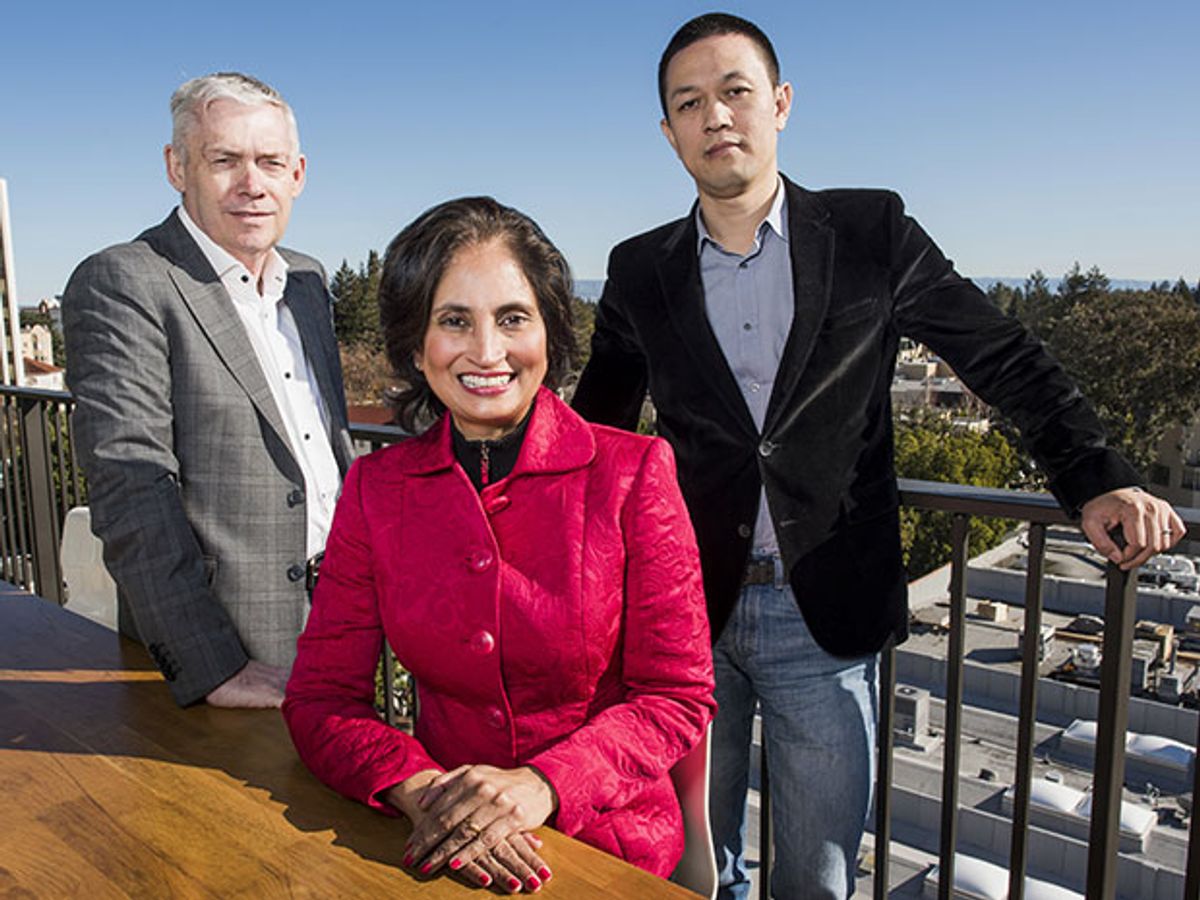“Nobody has ever done a global startup before, have they?” muses Martin Leach, co-president of NextEV, an EV startup that intends to launch an electric supercar later this year and a mainstream vehicle in 2017. Founded in late 2014, NextEV has its design headquarters in Munich, a software hub in San Jose, and most of its engineers in Shanghai.
“This time last year we were less than 10 people,” said Leach in an exclusive interview with IEEE Spectrum. “Now we’re over 1000, and by the end of this year, we’ll be over 2500. Probably by the end of 2017, we’ll be over 5000.”
NextEV has been raising money at an equally furious pace. Started with money from three Chinese internet entrepreneurs, NextEV was reported last summer to have raised an additional $500 million from the likes of Tencent, Sequoia Capital, and Joy Capital. Now, the company is promising to fund a 10 billion yuan (around US $1.5 billion) research and development effort into electric propulsion and autonomous driving, surpassing a similar $1 billion AI institute from Toyota.
“Our clock speeds are probably five times as fast as a normal OEM [original equipment manufacturer],” says Leach, who was previously CEO of Maserati and president of Ford Europe. The new company has already made a splash in the world of electric vehicles, providing technical expertise that helped propel the NextEV TCR team to victory in the first ever FIA Formula E championship last year. But the main focus of NextEV is an all-electric, road-legal supercar that should be unveiled in just a few months’ time. Contributing to NextEV’s speed in ramping up production is its plan to work to key partners. Says Leach:
Doing everything on our own would be foolish and would take too long. For instance, we don’t have any particular ambitions to get into the business of making actual battery cells. But the way that you put the cells together, in terms of modules and battery packs, is a core competence that we’ll do ourselves.
Around half of the company’s headcount are engineers, working on its power management, motor, drivetrain and digital systems. NextEV just announced that it was a building a 3-billion-yuan ($0.5 billion) factory in Nanjing to produce more than 250,000 motors and electronic modules annually, starting later this year.
NextEV also recently signed a manufacturing agreement with JAC Motors, a state-owned Chinese carmaker. “Our initial focus is on the Chinese market,” says Leach. “China is already the largest car market in the world, but it will be by far the largest zero-emission-at-point-of-use market.”
Part of that is due to the Chinese government’s aggressive carrot-and-stick policies aimed at improving the country’s choked (and lung choking) roads. These include matching subsidies and benefits like access to HOV lanes for electric vehicles, and harsh commuting and license restrictions for internal combustion vehicles.
This is leading to a coming flood of electric vehicles that NextEV’s founder, William Li, admits could disappoint consumers. “The winter of 2017 may be extremely cold for EV industry because of many bad EV products,” he said in a speech in January. “Government subsidies can help to kick off the market quickly, but they can’t make users love EV.”
Leach is adamant that drivers will love NextEV’s supercar—although he admits that few will actually buy it. “The supercar is obviously going to be a very expensive vehicle,” he says. “It’s not done for sales reasons, it’s done for other reasons. The supercar is very much showing our tech prowess, to demonstrate exactly what we can do, technologically and design-wise.”
The plan is for the supercar to provide a brand awareness that, along with NextEV’s Formula E work, might trickle down to the more affordable vehicle in its sights. Bloomberg reported that NextEV’s mass-market car could offer similar performance to a Tesla Model S at half the price. “We’re not trying to be a niche company,” says Leach. “Our products for the larger consumer market will be mainstream products with a premium feel, and we’ll have something towards the end of 2017.”
So far, NextEV has been successful in keeping a very low profile for its passenger vehicles. But one electric vehicle industry insider, who preferred to remain anonymous, says that the company still has a lot of work to do: “NextEV’s charging strategy is not fully baked, which doesn’t surprise me because this next generation of Tesla competitors are over-indexing on designing and producing the car, and under-estimating charging.”
Other experts agree with that assessment. Chelsea Sexton is an EV enthusiast who has advised many car makers. “I looked at hundreds of resumes on LinkedIn and tried to find reasons to find NextEV credible,” she says. “I couldn’t find any. They’re largely an unknown. I have a fair amount of skepticism in general about these start-ups, given that we’ve seen one in the last 20 years of EVs that’s done anything at all.”
Leach remains confident that NextEV can provide an affordable alternative to the Teslas of today and tomorrow. “I don’t worry about the other EV companies,” he says. “The global market for vehicles is over 90 million vehicles a year. Even the combined power of the [existing EV makers] and the new entrants is still only going to be a small fraction of that for a very long time.”
This article was corrected on 3 May to accurately reflect the opinions of a source.
Mark Harris is an investigative science and technology reporter based in Seattle, with a particular interest in robotics, transportation, green technologies, and medical devices. He’s on Twitter at @meharris and email at mark(at)meharris(dot)com. Email or DM for Signal number for sensitive/encrypted messaging.



